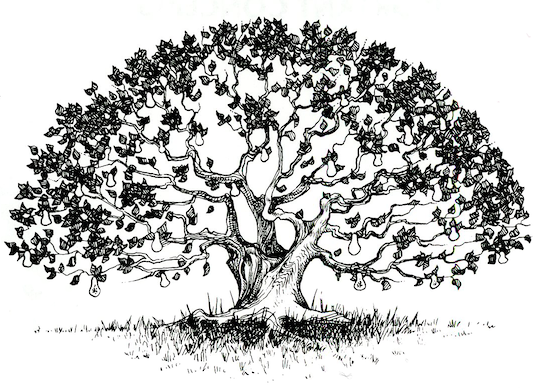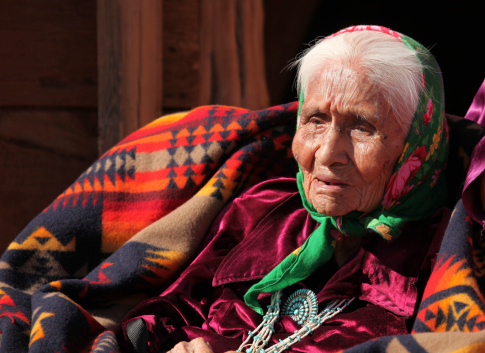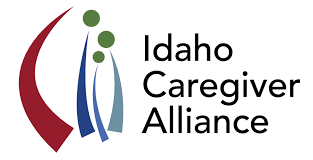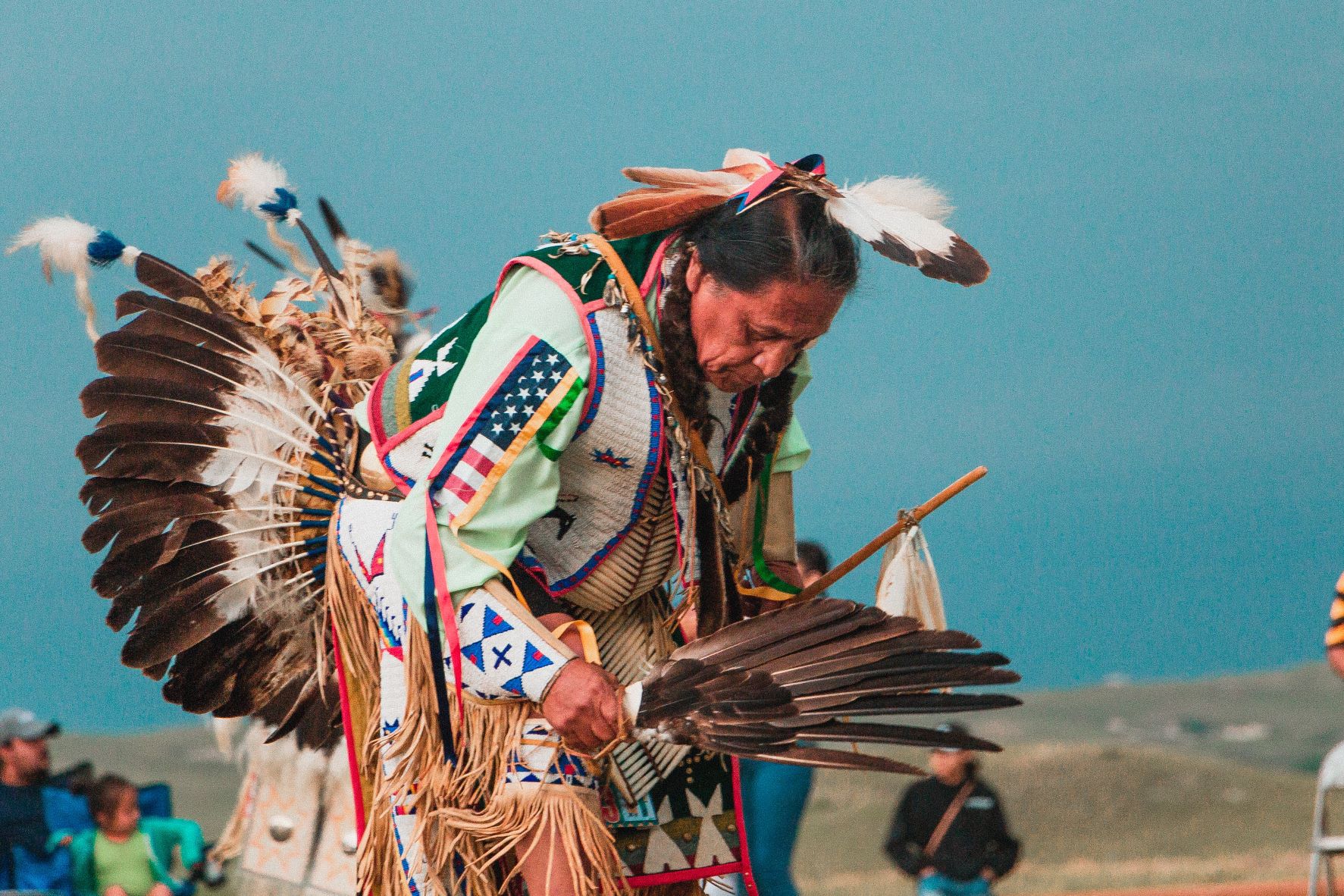
“For all the people of the earth, the Creator has planted a Sacred Tree under which they may gather, and there find healing, power, wisdom and security. The roots of this tree spread deep into the body of Mother Earth. Its branches reach upward like hands praying to Father Sky. The fruits of this tree are the good things the creator has given to the people: teaching that shows the path to love, compassion, generosity, patience, wisdom, justice, courage, respect, humility and many other wonderful gifts.” ~The Story of the Sacred Tree (Bopp, 1988)
American Indians and Alaskan Natives Spirituality
American Indians and Alaskan Natives (AI/AN) view spirituality as the energy that keeps them connected with Mother Earth, the Creator and each other. By using these energies, they gather strength to move forward in life and become healthy and wholesome individuals. Gray, LaBore, and Carter (2018) explain that spirituality encompasses religious beliefs and practices and a sense of self in relation to the natural world. It is clear that AI/AN people use their spirituality as a driving force for their decisions and how they navigate this world. The Sacred Tree, as mentioned above, represents their spirituality and symbolizes its importance.
Traditionally, the AI/AN elders hold a place of honor within their communities. These communities rely on their elders to tell stories and explain the symbols and beliefs to the younger generations. They use these moments to bond with the younger generations and keep their traditions alive. Many of these communities only share this knowledge through verbal communication; therefore, the AI/AN people consider learning sacred spiritual knowledge a privilege. It is important to note that not all tribes have the same spiritual context, and each community has unique values. These values make it difficult to provide a universal description of what spirituality means to this community.
Now, imagine removing spirituality from the lives of AI/AN elders. They are no longer able to participate in ceremonial activities like powwows’. They cannot use their spiritual pipes or artifacts. How would you describe this change in their daily lives? Is it part of aging? What if I told you this could be considered a form of elder abuse? The World Health Organization (WHO) defines elder abuse as “an intentional act, or failure to act, by a caregiver or another person in a relationship involving an expectation of trust that causes harm to an adult 60 years and older.” Elder abuse can take many forms that include physical, psychological, emotional, or sexual abuse, financial exploitation, neglect or abandonment. Because spiritual abuse is not a primary form of elder abuse categorized by organizations like WHO, there is little evidence of the impact of spiritual abuse.

Components of Spiritual Abuse
Unlike discrimination based on religion or spirituality, spiritual abuse typically occurs within interpersonal relationships. We can conceptualize forms of spiritual abuse as including:
Abuse from trusted spiritual leaders or mentors is when an individual uses their position within a religious community or organization to exploit another individual physically, sexually, emotionally, or financially. Looking at it from the AI/AN perspective, a spiritual guide or leader will create barriers for the older individual to decrease access to spiritual resources. An example is when a healer, or someone who conducts healing ceremonies to promote wellness, uses their status in an exploitive or demeaning way.
Limitations of access to sacred objects or ceremonial practice are when an individual prevents someone from utilizing a sacred artifact through neglect, intentionally disregarding requests to attend ceremonies, or denying that individual access to these artifacts. The elders use these ceremonies and rituals to connect with their community and those they love that have passed. The enrichment of culture by hearing their native language, seeing the dances, and experiencing the presence of their family and friends provides a sense of peace and safety to the older generation. When the elderly are excluded from these ceremonies or rituals it causes them to lose a piece of themselves.
To AI/AN elders, sacred objects are priceless. Many artifacts have been passed down from generations before them. When someone in the community has hit hard times, an elder member will give one of these sacred artifacts to that individual as an offering of peace and support. If a family member or friend takes that sacred object from an older individual and sells it for financial gain it is considered financial and spiritual abuse.

Contamination of sacred objects or practices can occur when individuals touch or use a sacred artifact without permission. Tribal traditions dictate the handling of these artifacts, and, if not done correctly, it can be disrespectful to the community. The Denver Art Museum housed a Zuni war god for some time. When the Zuni requested the return of the war god, they guided the proper handling of the war god to protect the integrity of the artifact and not negatively impact their spirituality.
Impact of Spiritual Elder Abuse
The WHO estimates that elder abuse costs $5.3 billion yearly in medical costs from violent injuries to older adults. While the financial implications of elder abuse are difficult to see, the emotional and physical consequences are devastating for the victim of elder abuse. Gubi and Jacobs (2009) interviewed counselors who worked with AI/AN elders who experienced abuse from spiritual leaders. The elders told the counselors that they felt they had lost their relationship with God. They explained they felt a loss of their voice and could not say no to the spiritual leaders, their families, and community members. The AI/AN community sees spirituality as a component of their life, and the abuse caused their physical health to decline.
How do we help?
There are several ways that the community and healthcare workers can help stop elder abuse within our communities. Some of these strategies include:
- Professional awareness campaigns to help healthcare workers recognize elder abuse
- Caregiver support to reduce stress
- Caregiver training
- Education of the community on the signs of elder abuse
If you, or someone you know, is suspected of being abused, please reach out to your local Adult Protective Services for support.

